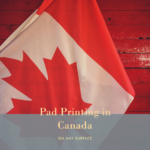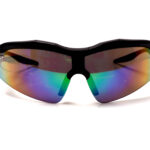Introduction
In today’s fast-paced business environment, corporate branding extends far beyond advertisements and websites. It permeates every aspect of business interactions, including office supplies and corporate gifts, making a statement about the company’s identity and values. UV printing Services, known for its durability and high-quality finish, has become a popular choice for creating branded items. However, like any technology, it has its limitations. Understanding these can help corporate clients make informed decisions about their branding strategies.
Understanding UV Printing Services
UV printing involves the use of ultraviolet light to cure or dry the ink as it is printed. This technology allows for printing on a wide variety of materials including plastics, metals, and paper, offering a versatility that is highly valued in the corporate branding sector. The instant curing of the ink through UV light exposure enhances the print’s durability and resistance to fading.
The Design Limitations
While UV printing offers numerous advantages, it is not without its limitations. These constraints can affect the final outcome of a printed product and, therefore, must be considered during the design process.
1. Material Constraints
UV printing excels on non-porous surfaces but its effectiveness can vary based on the substrate used. Some materials may require pre-treatment to ensure ink adhesion, which can add to the complexity and cost of the project. Additionally, materials like certain plastics can emit gases when exposed to UV light, potentially affecting print quality and durability.
2. Color Accuracy and Consistency
Although UV printers are capable of producing a wide spectrum of colors, variations in material properties can affect the accuracy and consistency of these colors. For instance, slight deviations in the material composition can lead to differences in how colors appear, even on identical settings. This is particularly challenging when brand consistency across various items is crucial.
3. Surface Texture Limitations
UV printing on textured surfaces can be problematic. The ink may not settle uniformly across a rough or uneven surface, leading to clarity and quality issues in the design. This limitation often requires a compromise between the desired texture of the substrate and the clarity of the printed design.
4. Size and Scale Challenges
The size of the print area is generally constrained by the printer’s capabilities. Larger items may need to be printed in sections or may not be accommodated by smaller UV printers. This can limit the size of the artwork or logo, impacting the visual impact of branded items.
5. Speed vs. Quality
While UV printing is faster than many traditional methods due to instant curing, the speed can still vary depending on the quality settings. Higher quality prints require slower printing speeds to allow precise ink placement and curing, which can be a limiting factor when time is of the essence.
6. Ink Adhesion Variability
In addition to the material constraints previously discussed, the variability in ink adhesion is another critical factor. Some materials may not only require pre-treatment but might also react differently under varied environmental conditions such as humidity and temperature. This inconsistency can pose challenges when ensuring long-term durability and quality, particularly for items that will be exposed to harsh or fluctuating conditions.
7. Complexity in Multilayer Printing
UV printing allows for the layering of inks to create textures or embossed effects, which can enhance the tactile and visual quality of the print. However, this process can be complex and requires precise control over the ink curing process to prevent smudging between layers. The layering can also lead to increased production times and costs, especially for intricate designs.
8. Limited Finishing Options
While UV inks provide a glossy finish that can be quite appealing, the options for other finishes (such as matte or satin) are limited. This can restrict design choices, especially when a brand identity requires a specific look or feel that cannot be achieved with the natural finish of UV-cured inks.
9. Environmental and Health Concerns
Although modern UV inks are far safer and less toxic than some traditional inks, there are still environmental and health considerations to take into account. The production and disposal of UV-cured materials must be managed carefully to minimize environmental impact. Additionally, the UV curing process itself can produce ozone, which requires adequate ventilation to ensure workplace safety.
Advanced Techniques to Overcome Limitations
Despite these limitations, there are several advanced techniques that can help maximize the effectiveness of UV printing:
- Pre-treatment Technologies: New advancements in pre-treatment technologies enhance the adhesion of UV inks to challenging substrates, widening the range of materials that can be used effectively.
- Ink Composition Improvements: Continuous improvements in UV ink formulations are helping to expand the range of achievable finishes and enhance the durability and environmental resistance of the prints.
- Integration with Other Printing Technologies: Combining UV printing with other printing technologies can offer hybrid solutions that leverage the strengths of each method. For example, using a base print from a traditional method followed by detailed UV-cured ink overlays can combine durability with artistic versatility.
Strategic Considerations for Corporate Branding
Tailoring UV Printing Services to Brand Needs
For corporate clients, aligning the chosen printing technology with the brand’s image and sustainability ethos is crucial. UV printing, with its rapid production capabilities and durability, supports a fast-paced corporate environment. However, understanding its limitations helps in making informed decisions that align with both aesthetic and functional needs.
Lifecycle Assessment
Evaluating the full lifecycle of printed materials—from production through to disposal—can help corporations make choices that are not only economically but also environmentally sound. Such assessments guide in selecting materials and technologies that reduce the overall carbon footprint.
How Border Pad & Print Can Help
Border Pad & Print offers state-of-the-art UV printing services tailored to meet the needs of corporate clients interested in creating high-quality, durable, and visually appealing branded office supplies and gifts. Our expertise ensures that the limitations of UV printing are managed effectively, providing our clients with the best possible outcomes for their branded materials.
FAQs
Q1: What types of materials are best suited for UV printing Services?
UV printing works exceptionally well on acrylic, glass, metal, and PVC, among others. These materials offer the best adhesion and durability for UV-cured inks.
Q2: Can UV printing be used for both indoor and outdoor items?
Yes, UV-printed items are resistant to weather and UV radiation, making them suitable for both indoor and outdoor use.
Q3: How can I ensure color consistency in my branded items?
Working with a professional service can ensure pre-print testing and adjustments are made for color accuracy across different substrates.
Q4: What is the turnaround time for a UV printing project?
The time can vary based on the project scale and quality requirements but typically, UV printing is quicker than traditional methods due to its instant curing process.
Q5: Are there any special care instructions for UV-printed items?
UV-printed items are generally very durable, but it’s advisable to avoid abrasive cleaning methods that could wear down the print over time.
Conclusion
UV printing offers a robust solution for corporate clients looking to create branded office supplies and gifts. While it presents certain design limitations, these can often be mitigated with professional expertise and advanced planning. At Border Pad & Print, we leverage advanced UV printing technology to help our clients achieve high-quality results that align with their branding goals. Considering UV printing Services for your next corporate branding project? How can we help you exceed your branding expectations?
Also know about



